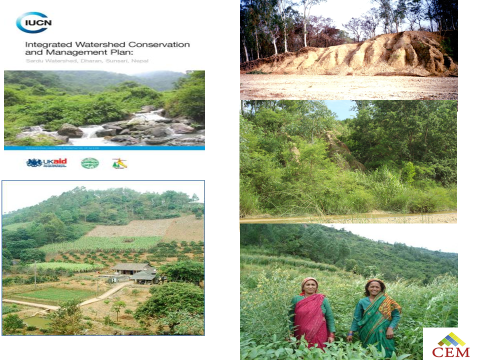Increasing role of ecosystem restoration for scaling up nature based climate and biodiversity solutions

Increasing role of ecosystem restoration for scaling up nature based climate and biodiversity solutions
Madhav Karki, Ph.D.; Distinguished Fellow, Centre For Green Economy Development, Nepal
Subash Karki, Project Officer, CGED-Nepal
The UN has declared the 2021-30 a decade for ecosystem restoration. The decade strategy has three goals: a. Enhance global, regional, national & local commitments & actions to prevent, halt & reverse the degradation of ecosystems; b. Increase our understanding of the multiple benefits of successful ecosystem restoration; and c. Apply this knowledge in our education systems and within all public and private sector decision-making. IUCN is the partner to support UN members in implementing the strategy. IUCN has come up with 8 principles to be followed to achieve ecologically sound ecosystem restoration. They are:
Engage with multi-Stakeholders
Use diverse sources of knowledge
Learn from native reference ecosystems
Develop ecosystem recovery process
Set clear goals and objectives
Aim for highest level of recovery
Apply at landscape level for highest value
Restoration is continuous process
The recently concluded COP27 and COP15 have both recognized and boosted up the role of ecosystem based approaches and nature based solutions. While the UNFCCC COP27 outcome the Sharm-El-Sheikh Implementation Plan (SIP) has promised to significantly scale up funding for adaptation and raise ambition for mitigation, CBD COP 15 while approving the global biodiversity framework (GBF) has agreed to bring 30% of the world’s land and ocean under protection by 2030. The GBF with its 4 goals and 23 targets to be achieved by 2030 has also promised to hike annual funding for nature conservation to developing countries to USD 30 billion. The bulk of these funding will be directed to scale up ecosystem based adaptation, disaster risk reduction and other nature based solutions including for enhancing the biodiversity values of the other effective conservation measure areas (OECMA) through active and meaningful participation of indigenous peoples and local communities.
While the above COP decisions are of major milestone nature, their implementation is no less challenging. Proper understanding of natural processes and ecological succession is important for gaining success in Ecosystem Restoration. Ecologically sound restoration is the process of assisting the recovery and management of ecosystem service values and ecological integrity that include: a) variability in biodiversity, b) ecological processes and structures; c) socio-economic and political contexts, and d) sustainable indigenous and local cultural practices. For example, in the context of forest restoration, the emphasis has to be on restoring both the socioeconomic and ecological values as well as the ecological integrity. It is clear that without harnessing the unlimited power of Nature to moderate climate, reverse biodiversity loss and control pollution, the world will miss several goals and targets set by Paris Agreement. Ecosystem Restoration and other nature based solutions can deliver one third of the mitigation needed by 2030 to keep global warming below 2 °C while also helping societies and economies adapt to climate change. Sustainably managed socio-ecological system can improve supply of ecosystem goods and services and improve local and national economies. Healthy ecosystems can sustain resilient livelihood activities by improving capacity of communities and ecosystem managers. Thriving ecosystem reduces disaster risks, and manages ecosystem resources sustainably for well-being and safety of the dependent communities as shown by the pictures below:
